10 Types of Gamestar Mechanic Gameplay
Despite the simple look of the Gamestar Mechanic website, you can use the available tools to make many different types of games that comprise an excellent starting point for understanding what makes a game fun to play and can produce a sense of fun by way of many different processes.
Navigator
The navigator game involves an avatar working its way toward a goal by maneuvering through spatial puzzles. Top-down games often create this experience via mazes or dungeons, whereas platformer navigators are often referred to as run-and-jumpers. This simple but fun gameplay type can be expanded in a number of ways, since it can work along with most any arrangement of goals, rules, and challenges.

Enemy gauntlets
The enemy gauntlet is a simple and effective way to provide a challenge in a game. It is often applied by inexperienced users, but can be useful to veterans as well. An enemy gauntlet is a level, or a portion of a level, consisting of well-placed enemies attacking the avatar through various methods and motion paths.
In platformer games, one or more enemies often guard a platform by pacing back and forth on top of it, whereas top-down games allow for much more complexity, such as using intricate motion paths to design powerful guillotines or barricades.
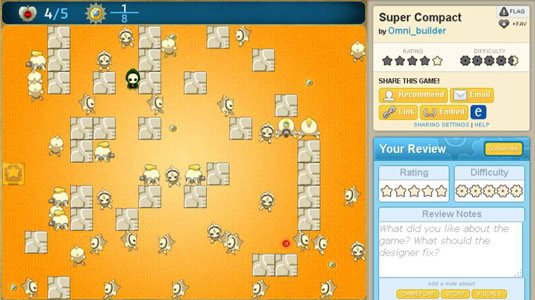
Frag the foes
Gamestar Mechanic players often love a good action romp. Because the avatar is armed with a weapon and set loose in a level full of enemies, the frag-the-foes concept is popular among thrill seekers.
There are many ways to apply this type of game incorrectly, but it’s quite rewarding to get it right: Because enemies follow simple motion patterns, you should ensure that they always pose a threat to the avatar rather than turn into useless goons that aren’t interesting to the player.
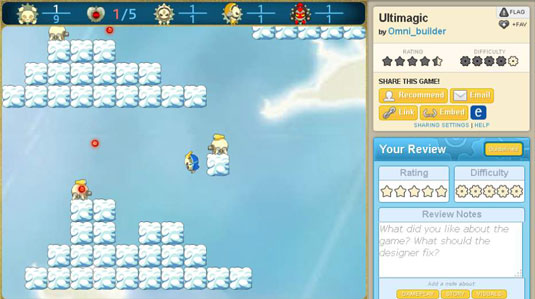
Storyteller
Lots of designers enjoy telling stories in their games, and they use a storytellergame to focus their work on a narrative. This type of game focuses specifically on telling a story, usually via a series of message blocks or the introductory and winning messages on each level. The designer tells a story by way of segments of text spaced appropriately through the level, usually with gameplay illustrating the events.
Grand adventure
A popular type of game among both new and experienced designers, thegrand adventure is a game that has everything — a lengthy gameplay, an intricate story, and detailed visual elements. It takes a bit longer to design, and it often needs to be combined with other types, but it’s a game to be proud of. The disadvantage is that this type of game is easy to lose interest in.
Virtual economy
One of the many fields relevant to game design is economics. A virtual economy is a game based around one or more of these systems. A game centering on a virtual economy is interesting: It can implement elements of complexity and strategy because players have to work with dynamic elements in order to play the system and win.
Here’s a game where you play a predator trying to survive while functioning along with a prey population and a limited plant population.
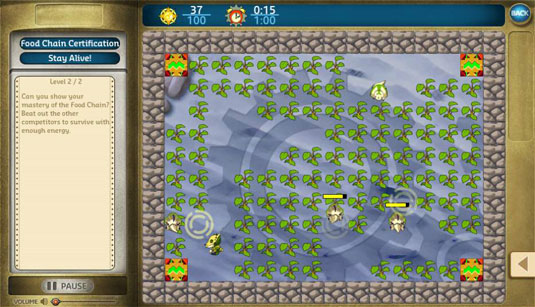
Puzzle
The puzzle game, consisting of a player having to use her wits to clear a challenge, can be applied in many different ways, whether by telling a riddle or unleashing an advanced gameplay trick. For example, some players use sprites such as enemy generators and transmogrifiers, to manipulate populations, requiring players to toggle or destroy the proper machines to satisfy a number of population counters.
You can find many ways to build an interesting puzzle in Gamestar Mechanic. Usually, you need a lot of practice and experience to come up with a challenging puzzle, but a single puzzle can often be expanded into an entire game.
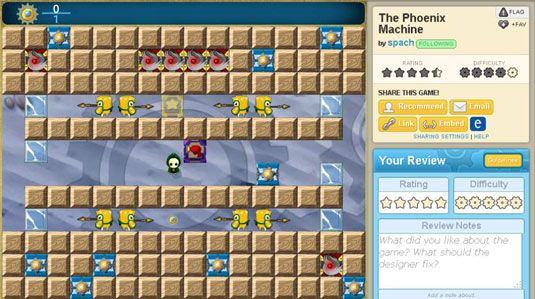
Showcase
A showcase is a display of your abilities, to show off your techniques, backgrounds, thoughts, stories, or sprites. The simplest showcase game is one that contains all the sprites you own, put together in a room. Though this sort of game is often used by designers, it isn’t particularly popular among players. Always combine this type of game with another one, giving players some gameplay to keep them interested.
Timer rush
In the timer rush type of game, the player must complete certain objectives within a time limit. Whether by way of an expiring timer, energy meter, or population counter — or the actions of other sprites — a time constraint adds a sense of urgency to your game.
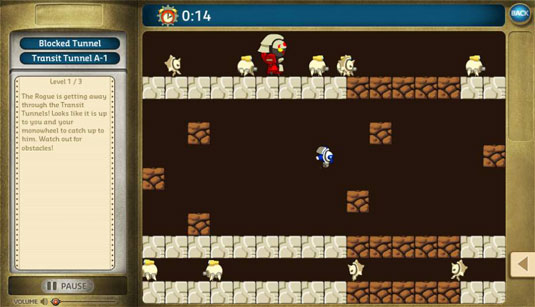
Innovations and combined personalities
After you have experience with game design, you can try to build on classic elements of video games to produce more unique content. To gain a deeper understanding of the game system, try inventing your own game mechanics.
To develop your own innovations, try these tips:
- Expand a lesser-used component.Certain components in Gamestar Mechanic may not always be used to their full potential. Take full advantage of complex sprites — and play around with simple components to find new uses for them. In this game, when the avatar is damaged, it cannot be damaged again for about a second. This universal rule prevents the avatar from taking ridiculously rapid damage.
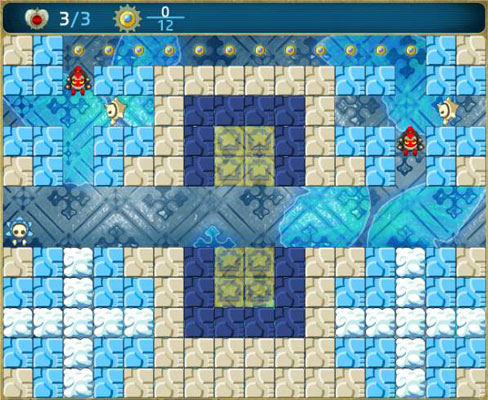
- Find synergy between different game types.Many compelling games apply multiple components and mechanics at one time. For example, combine the navigator and timer rush game types to make the player escape a labyrinth before time runs out. Single mechanics don’t have to stand alone — add anything that brings your game closer to your personal vision.
- Adapt a non–Gamestar Mechanic concept.Many users enjoy designing adaptations of popular video games in Gamestar Mechanic, and no two independent adaptations are completely alike. Even if you don’t want to copy a game you like, use it for inspiration. This is good for beginners and a great way to use your sprite library to its full potential.




Leave a Comment